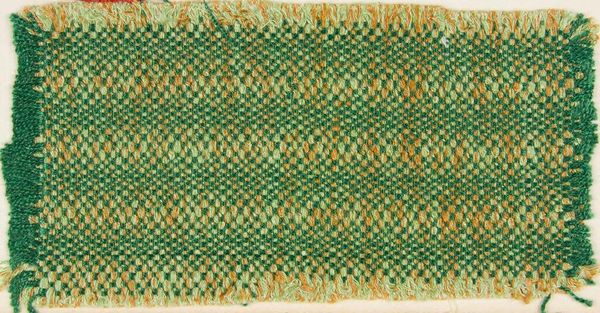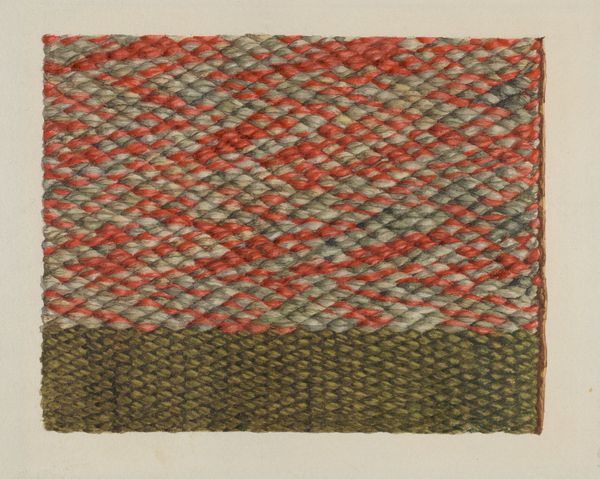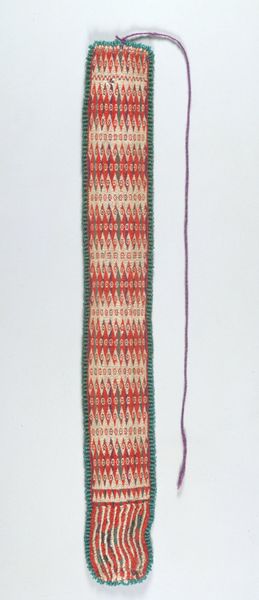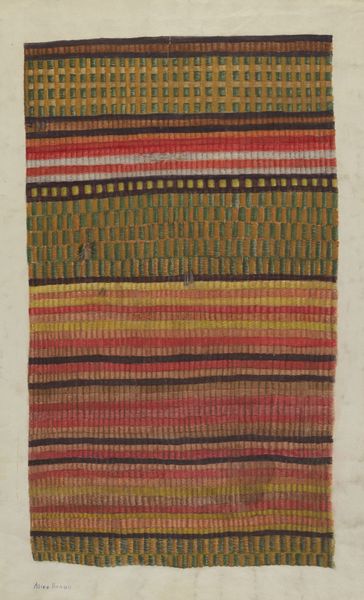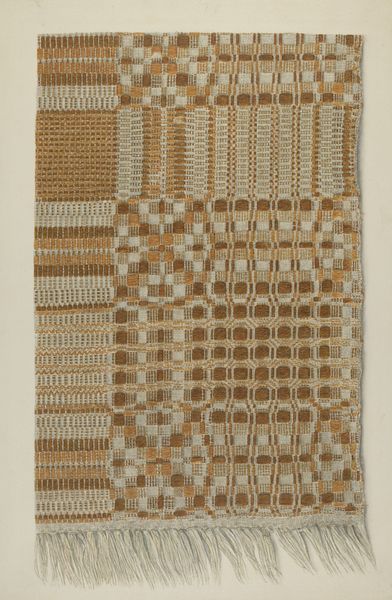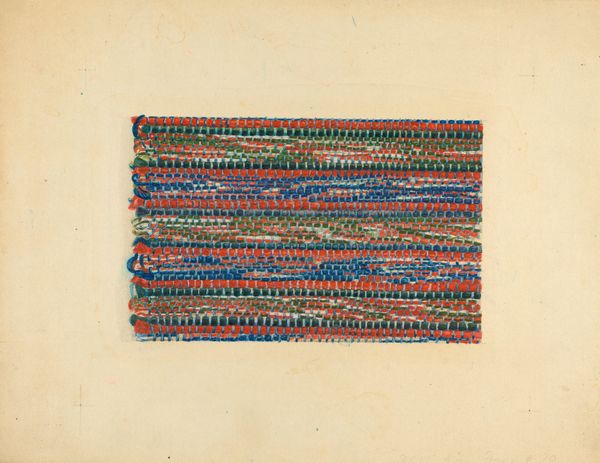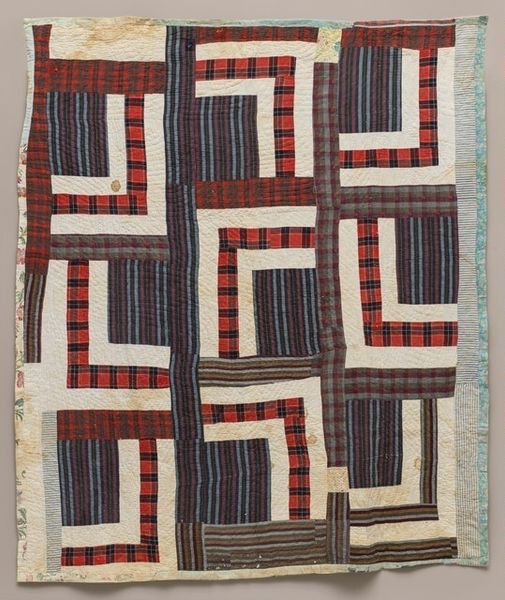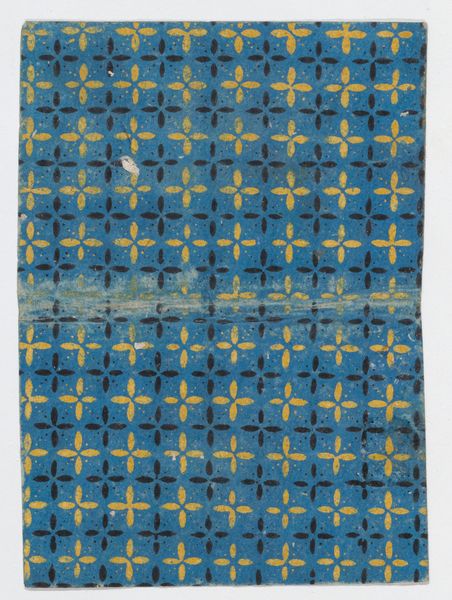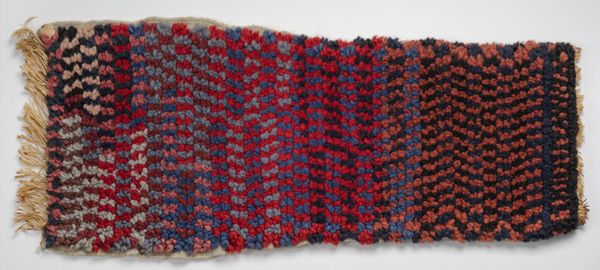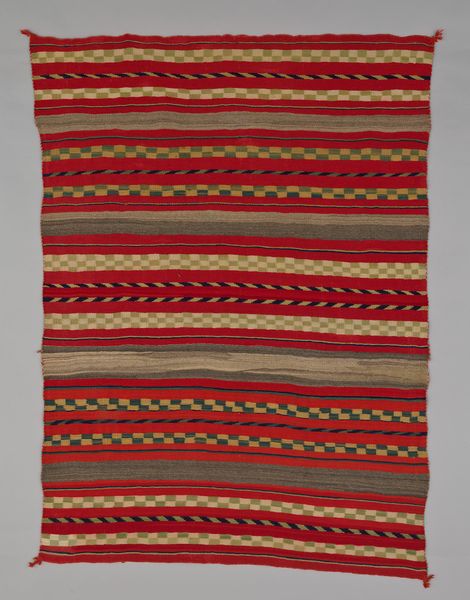
textile
#
natural stone pattern
#
naturalistic pattern
#
textile
#
text
#
geometric pattern
#
organic pattern
#
black-mountain-college
#
repetition of pattern
#
vertical pattern
#
pattern repetition
#
decorative-art
#
imprinted textile
#
layered pattern
#
combined pattern
Dimensions: overall: 12.7 × 43.18 cm (5 × 17 in.)
Copyright: National Gallery of Art: CC0 1.0
Anni Albers made this textile artwork, Sunny, with fiber, exploring weaving as a language of colour and form. Look at the surface; it's a field of yellows and oranges, punctuated by moments of blue and green, a tightly woven grid that feels both structured and playful. The texture invites touch, suggesting a deep connection between the maker and the material, a hands-on process of building something intricate from simple threads. Think about the way Albers approaches weaving: it's not just about making a flat surface. Instead, it’s like building a painting, where each thread is a stroke of color, each intersection a moment of decision. Notice the small irregularities, those subtle shifts in color and texture that give the piece its character. It’s like Albers is having a conversation with the loom, letting the material guide her. Albers' weaving can be compared to the work of Paul Klee, who explored the expressive possibilities of line and colour, but with a more playful approach. Like Klee, Albers embraces ambiguity, creating art that invites multiple readings and celebrates the joy of discovery.
Comments
No comments
Be the first to comment and join the conversation on the ultimate creative platform.
